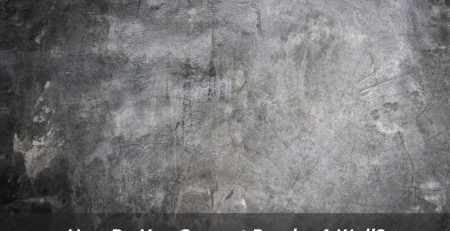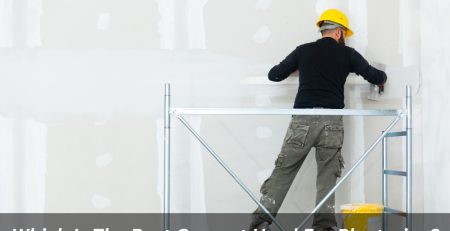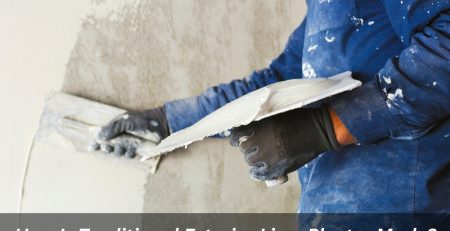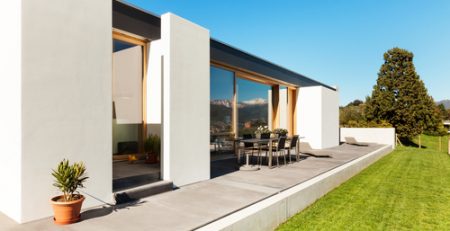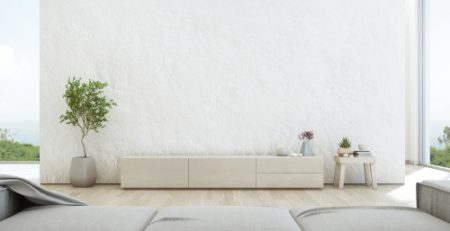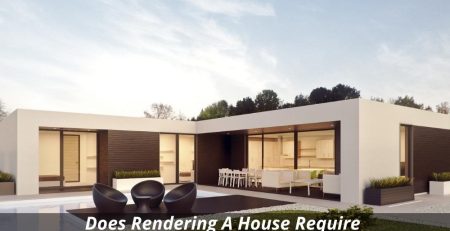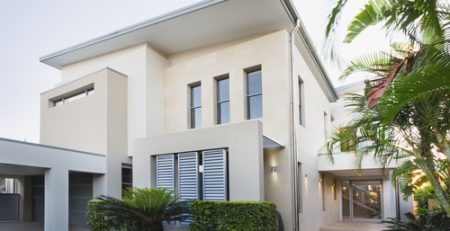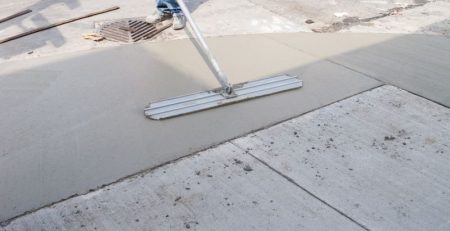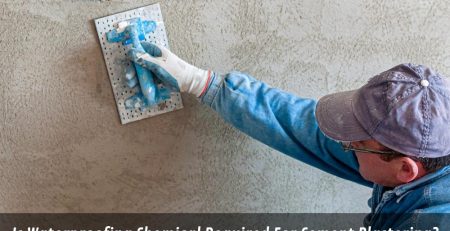What Is The Difference Between Cement Render And Plaster?
Cement render and plaster is a common methods of finishing interior walls and ceilings. The two methods differ in their application and finish. Which one should you choose?
Cement rendering is a type of drywall that uses cement powder mixed with water and sand to create a solid wall surface. Plastering involves mixing gypsum (a mineral) with water to form a slurry that dries into a smooth, durable finish. Both types of finishes are commonly applied over wood studding.
Plastering is often preferred because it provides a smoother, more uniform finish. On the other hand, cement rendering has better resistance to moisture and temperature changes. If you want to add texture or pattern to your finished ceiling, cement rendering is the way to go. This article will help you understand the differences between cement rendering and plastering.
When choosing which type of finish to use for your walls, consider the following:
- Cement renders can provide an attractive, durable finish for all exterior walls. However, they require extra care when cleaning and maintenance, since these surfaces are not as easy to clean. Plus, cement renders have less thermal insulation properties than plaster.
- Plasters can make any area look more spacious and elegant by creating interesting textures, patterns and colours. They also come in a variety of sizes, shapes and colours. You can even combine different types of plasters to achieve various effects.
- All of the above – especially if you’re looking for good-looking and durable results in a short period of time – makes cement rendering a viable option.
Types of Cement Rendering
There are three types of cement renderings available on the market today:
- Interior/Exterior Type – A mixture of Portland cement, sand and water is sprayed onto the wall, floor or ceiling to give it a smooth finish. It forms a hard shell over the substrate.
- Drywall – A ready mix of cement, sand and water that comes in sheets and is used to coat large areas such as garage doors, cladding and panelling.
- Mortar Coat – An acrylic emulsion mortar is mixed from a powdered formula called ‘Bondo’. Bondo is made up of a white bonding agent that is bonded with a thin acrylic sheet. The Bondo is put on top of the wallboard then the acrylic paint is painted on top of the Bondo. The result is a high-quality finish.
Advantages of Cement Render
Here are some useful advantages of using cement render.
• Long lasting
Unlike regular paints, cement render lasts longer than most other paints. In fact, it can last for decades!
• Durable
It’s very difficult to chip away at cement render. In fact, you cannot even scratch it, unless you drill deep holes through it.
• Easy to apply
You only need the right equipment to apply cement render. No special tools are required. Just mix the ingredients together and spray them over the wall, floor, or ceiling.
Disadvantages of Cement Rendering.
Despite its many benefits, there are some disadvantages associated with cement rendering. These include:
• More expensive
You’ll spend more money purchasing cement render compared to conventional painting materials. But this cost will be offset by its long-term durability.
• Time-consuming
It may take longer to apply cement render. This is because it requires multiple applications to cover large areas.
If you’re planning to use cement rendering, here’s a tip: To avoid wasting too much material, start small and work slowly towards the larger areas. Also, don’t forget to factor in the cost of removing the old render before applying for a new one.
What is plaster used for?
Plastering refers to a process where dry plaster (a type of gypsum) is applied over walls, floors or ceilings. After the plaster has dried, it’s usually covered with another layer of paint or wallpaper. Plastering is done mostly for interior walls but can also be used on exterior walls.
A good example of a room that uses plastering would be your bathroom, kitchen or bedroom. Plastering is often used for rooms that are susceptible to moisture damage because of their location within the home. For instance, bathrooms and kitchens tend to get moist due to frequent bathing and cooking activities respectively.
Types of Plastering
There are two main types of plastering:
- Waterproofing Plaster
- Dry Plaster
Waterproofing Plaster
This type of plaster is designed to protect against dampness and mould growth. It’s commonly used on walls and ceilings that are prone to water damage.
Dry Plaster
This type is best suited for exterior walls and ceilings. It gives an attractive finish and protects the underlying wall from moisture damage.
How does Plastering Work?
The plastering process involves three steps:
- Preparing the Wall
- Applying the Plaster
- Finishing Touches
Preparing the Walls
Before starting any plastering project, make sure that the walls are free of dirt and debris. Make sure that all surfaces are clean and smooth, including window frames, doors and door jambs. You should also remove any loose nails and screws.
Applying the Plaster
The first step in plastering is to apply a thin coat of plaster as a primer. This helps prevent the plaster from absorbing any excess moisture. When applying the primer, try not to apply it directly onto the finished wall.
Instead, use plastic tape to hold the plaster down while it dries. Once the primer has completely dried, apply the final coat of plaster.
Finishing Touches
Once the plaster has fully cured, it needs to be finished. Depending on the plaster you’ve chosen, you’ll need to apply different finishing touches. If you chose waterproofing plaster, you’ll want to add some kind of protective sealant to help keep moisture out.
Other Considerations
When choosing whether to use plaster or render, consider how well the wall will stand up to weather conditions. Some people prefer plaster because they think it offers better protection against moisture damage than render. However, if your house is exposed to heavy winds or extreme heat, then you might need to choose to render instead.
In summary, plastering is a great way to beautify the walls and ceiling of your home without having to pay extra for expensive paints. You just have to be prepared to put in some time!
What are some common uses for each material?
Cement Render
Concrete blocks have become less popular now that more people are opting for modern materials like brick and stone. A few reasons why this is happening include:
- The cost of building materials is lower
- Cement renders are easier to install
- They last longer
- Cement renders look nicer
However, cement renders still offer many benefits, so don’t let these reasons deter you from using them.
Here’s a brief list of advantages:
- Easy to work with
- Durable
- Great looking finish
- Low maintenance
- Can withstand high temperatures
- Looks great
- Weather-resistant
- Long-lasting
Smooth Surface Finish
Smooth surface finishes can give your home a sleek, luxurious appearance. These types of finishes are ideal for bathrooms, kitchens, entryways, hallways, staircases and other areas where you’d want a nice, shiny surface.
Some examples of smooth surface finishes include:
- Ceramic tile
- Marble
- Granite
- Polished wood
- Engineered hardwood flooring
You can achieve a similar appearance by painting woodwork yourself. In fact, this is often one of the cheapest ways to update your home.
Plastering
Another type of finish that looks good but isn’t very durable is plastered walls. Plasters are easy to apply and come in a variety of colours. But, they’re also prone to peeling and cracking over time.
An excellent example of a plaster finish would be a white coat applied to an exterior wall.
If you decide to use plaster, there are two main types available:
- Hardboard plaster
- Waterproofing plaster
Hardboard Plaster
This type of plaster is made from gypsum and cellulose fibres. It’s considered to be an economical option because it’s easy to apply and inexpensive to buy.
However, one disadvantage of hardboard is that it doesn’t provide much insulation. So, if you live somewhere cold, you may find your home getting colder as the year goes on.
Another downside is that you may find it difficult to remove stains from your walls when repainting. If you do get a stain, you’ll probably have to wait until it dries completely before attempting to clean it away.
Waterproofing Plaster
Waterproofing plaster has been developed specifically to help protect against mould and mildew growth. This plaster is designed to keep out moisture while allowing air to circulate freely around the room.
It’s important to use waterproofing plaster correctly. Otherwise, you could end up with cracked and damaged walls. And, even though it was designed to stop water penetration, it won’t prevent small amounts of rain from seeping into your walls.
The best way to avoid problems is to make sure that your walls are properly sealed. You should seal all cracks, holes and gaps in the walls with caulking. And, you should always check that any new doors and windows fit tightly.


